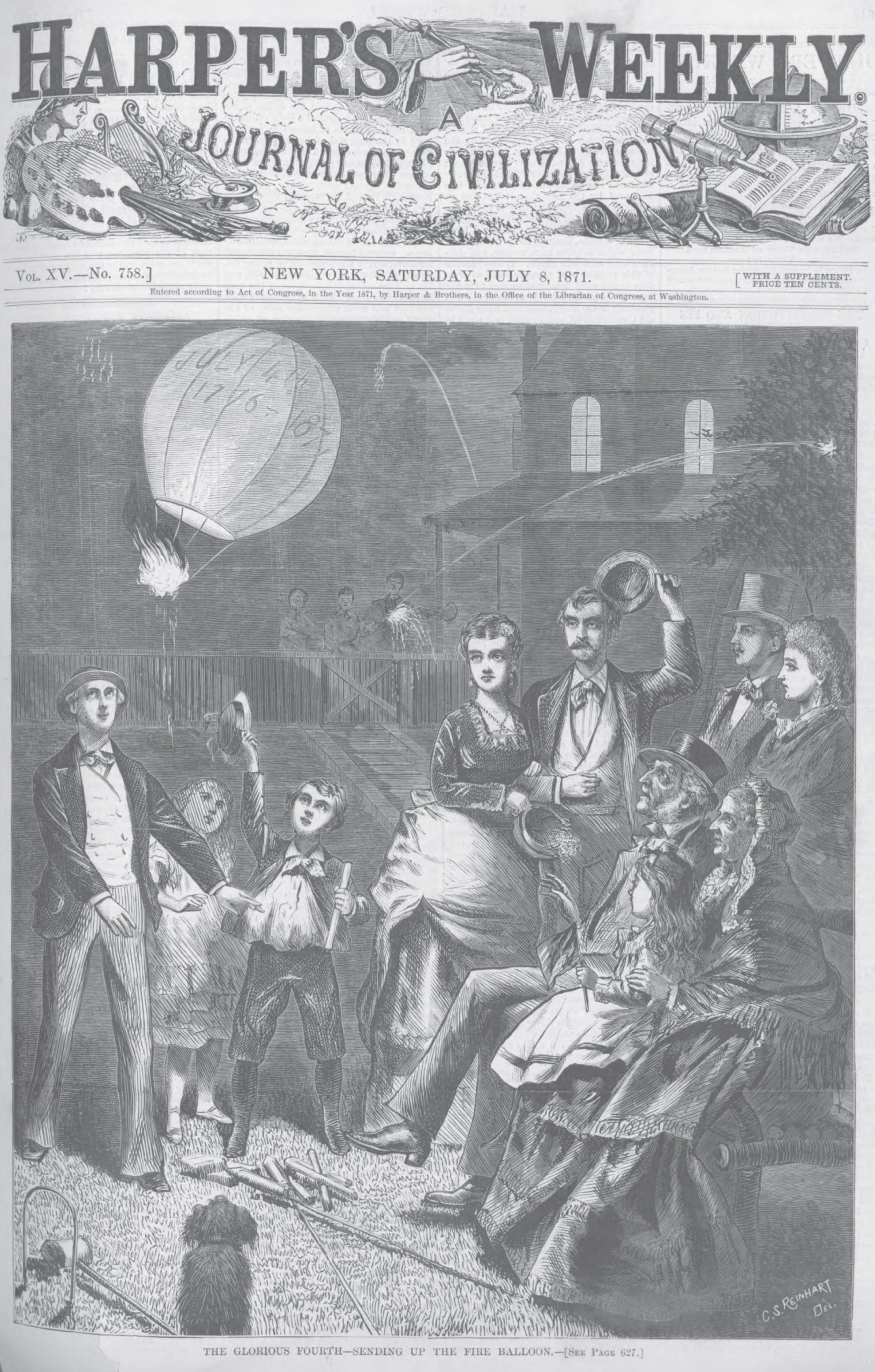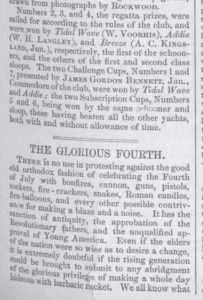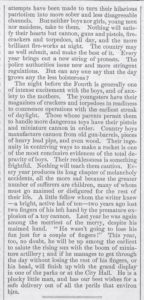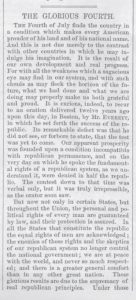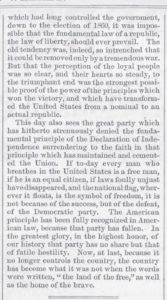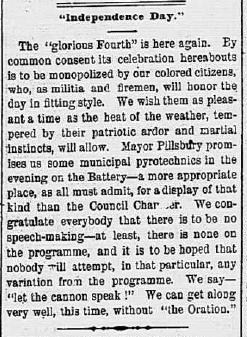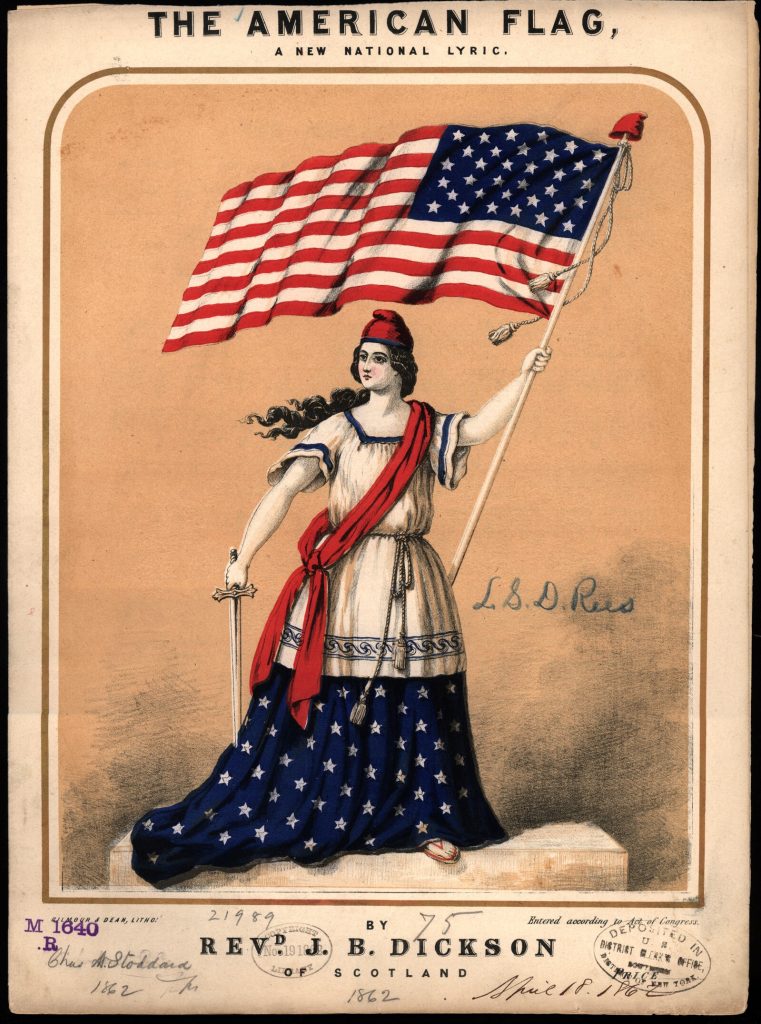From the July 8, 1871 issue of Harper’s Weekly:
An editorial commented on the picture – the Fourth of a July was customarily a noisy, boisterous, and often dangerous holiday:
____________________________
A week later the editors still found the Fourth glorious because the war and the overall defeat of the Democratic party had changed the nation “from a nominal to an actual republic” and the national flag had become “a symbol of freedom”:
_________________________________
In Charleston, South Carolina the day wasn’t quite as glorious, at least not for the editors of the Daily News:
According to Wikipedia, Gilbert Pillsbury was a Yankee abolitionist who headed south during the war as an agent of the Freedmen’s Bureau. He served as mayor of Charleston from 1869-1871. He was defeated for reelection by German immigrant Johann Andreas Wagener, who served in the Confederate army during the Civil War. Mr. Pillsbury lived in Massachusetts from 1872 to his death in 1893.
The Declaration of Independence mentions Life, Liberty and the pursuit of Happiness. I think freedom is a part of liberty. You can listen to a “Hymn to Freedom” from 1964 at Youtube. You can hear a different version of the same Hymn (with words) at Barbershop Harmony Society’s 2019 International Convention. It was said that Oscar Peterson wrote the original instrumental in the 1960s.

